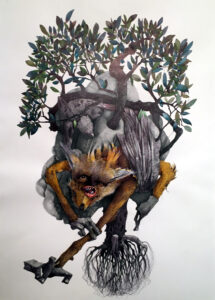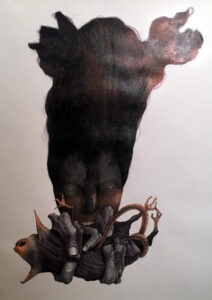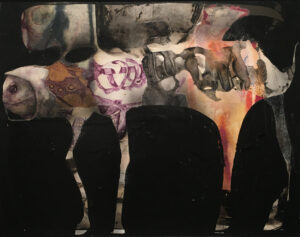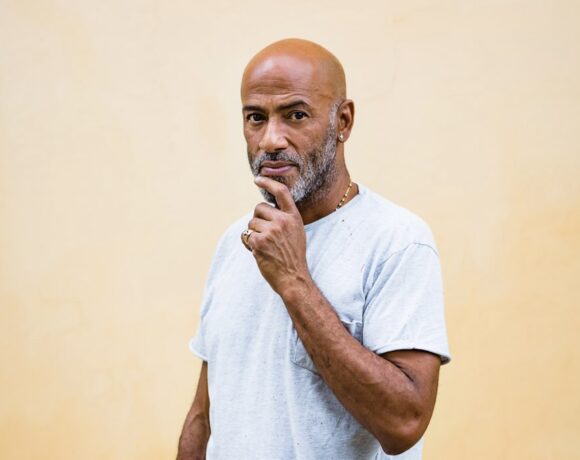In Pulsions and their Destinies (1915), Sigmund Freud describes instinct as “a concept on the borderline between the mental and the somatic, the psychic representative of the stimuli that originates in the organism and reach the mind”. Instinct, an innate behavior that unites animals and humans, is always aimed at a precise purpose and determines characteristic responses. Although in humans the instinctive patrimony has less influence because it is controlled, in the adult, by the greater development of intelligence, according to Freudian psychoanalysis the life instinct (eros) and the death instinct (thanatos) are the two energetic poles of psychic life. These categories, whose embryonic existence we find traces of since classical literature, are also implicitly implied in Aesop’s (Menebria, around 620 BC – Delphi, 564 BC) moral fables, short poems in which the actions of personified animals opposed to each other for survival were narrated with the intention of communicating a moral that shed light on the most peculiar aspects of human nature. Aesop’s exempla, masterful for their effectiveness in reflecting deceit, truth, foolishness and cunning, dispensed practical teachings (which are still fully valid today) by allegorizing emotional situations through typical instinctive animal behaviors, which made it possible to narratively and visually translate concepts otherwise destined to remain abstract.

Míles, Il falco e la volpe, mixed media on paper, 2022, courtesy Portanova 12, Bologna

Míles, La gatta e Afrodite, mixed media on paper, 2022, courtesy Portanova 12, Bologna
The exhibition Esopo – Indistinct Instinct, solo exhibition by street artist Simone Miletta (aka Míles) at Portanova 12 gallery in Bologna, draws its original nucleus from five illustrations inspired by as many fables by Aesop, in which the stories of men and animals fighting to overwhelm each other are synthesized in figures dense with psychic energy. The choice of this literary source acquires a double exemplary value, both in reference to the main field of interest of the artist’s poetics, i.e. the research on man as a social animal governed by atavistic impulses, and with regard to his peculiar creative process, based on a free flow of thought mentally condensed into an image and immediately transferred to the pictorial support. Míles, trained as a sculptor at the Carrara Academy of Fine Arts, owes to this imprinting the approach to creation that characterizes the variegated areas of his expressiveness (such as muralism, painting, drawing and sculptural modeling), which find their common denominator in an instinctive approach opposed to the diktat of the project on which a large part of contemporary artistic production converges. Experimentation with materials, therefore, is the means by which the artist undertakes to fathom the depths of his unconscious and the soul of the places in which he immerses himself, in an attempt to formulate a visible link with sensations and premonitions that are impossible to translate in words. His creative process is programmatically anti-rational and is oriented towards an integral and direct restitution of the first mental image that emerges when he connects with the subjects of his inspiration.

Míles, Untitled, mixed media on wood, 2022, courtesy Portanova 12, Bologna
From this point of view, therefore, Aesop’s poems are not congenial to him for the wise morals to which they mainly owe their survival over the centuries, but for the impulses underlying the dynamics from which the allegorical narration originates. In the drawings that we see in the exhibition, a very precise and controlled sign structures , virtuosic interweaving of bodies caught in the moment in which, tearing each other to pieces, they end up inextricably interpenetrating, giving rise to hybrid creatures, firmly interconnected in their apparent inconsistency. Among the fables, Míles chooses the ones that are closest to his instinct: some are more easily recognizable, such as the tale of the frog and the scorpion, the farmer, the son and the donkey or the falcon and the fox, others appear more indecipherable for those who do not have a detailed knowledge of this literary heritage of classical culture. But what matters, beyond the game of guessing the source, is the correspondence between the contemporary artist and the Greek writer in perceiving and exploring archaic and violent sensations without hesitation, in which the struggle between eros and thanatos becomes the principle of creation of an imaginative universe so touchingly imbued with our craziest fears.

Míles, vasi dipinti in ceramica, 2022, courtesy Portanova 12, Bologna
If in the agglomerations of figures that we see in the drawings we find powerful clots of energy compressed and held by the lines of force identified by the graphics, which are the result of a meditated and slow visualization work, while in the paintings we find the floating fragments of an explosion that has already occurred, a sort of underwater stillness that follows the creative and destructive fray. In painting therefore, especially in the large format, violence is no longer depicted, but physically experienced by the artist in throwing color on the canvas, adding papers and material layers which are then torn, erased and manipulated until the chromatic spots and the superficial skin make the image emerge, this time sought in a process that approaches divination to reconnect ancestral impressions and fragments of the imaginary from the art history. The subjects here are mysterious plural creatures floating on black backgrounds, seraphically calmed in the acceptance of their mutual fusion, which still appeared conflictual in the drawings. Míles completes the review of his expressive possibilities in the exhibition with an extremely refined series of painted ceramic vases, in which an essential figuration adapts to the existing sculptural form with surprising naturalness, further confirmation of how, despite the heterogeneity of the media used (a each of which correspond to a specific aesthetic and style) its inspiration is unitary and coherent.
Info:
Míles. Esopo – Istinto Indistinto
2/12/2022 – 14/01/2023
Portanova 12
Via Portanova 12 Bologna
Graduated in art history at DAMS in Bologna, city where she continued to live and work, she specialized in Siena with Enrico Crispolti. Curious and attentive to the becoming of the contemporary, she believes in the power of art to make life more interesting and she loves to explore its latest trends through dialogue with artists, curators and gallery owners. She considers writing a form of reasoning and analysis that reconstructs the connection between the artist’s creative path and the surrounding context.






NO COMMENT